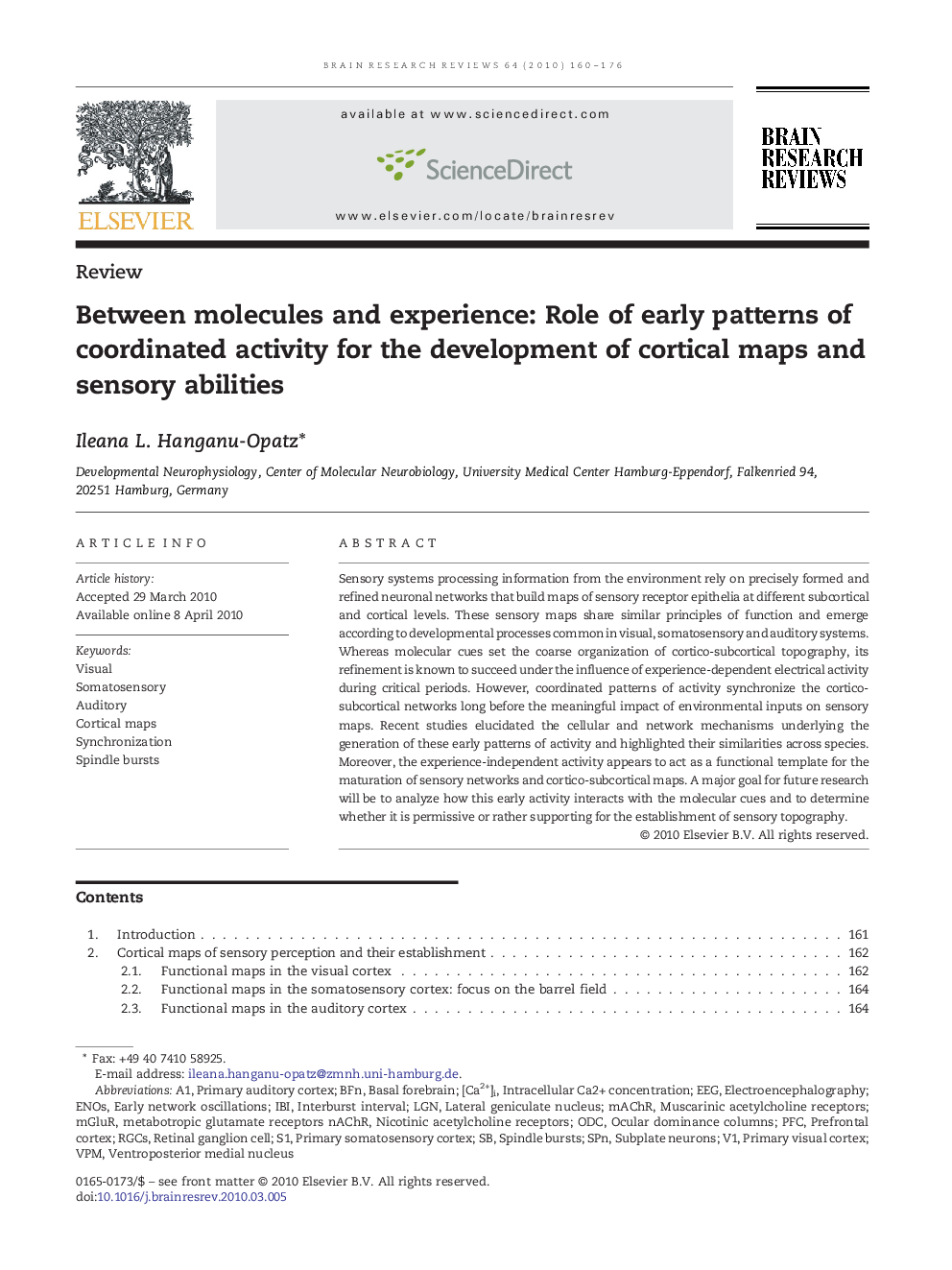| Article ID | Journal | Published Year | Pages | File Type |
|---|---|---|---|---|
| 4333712 | Brain Research Reviews | 2010 | 17 Pages |
Sensory systems processing information from the environment rely on precisely formed and refined neuronal networks that build maps of sensory receptor epithelia at different subcortical and cortical levels. These sensory maps share similar principles of function and emerge according to developmental processes common in visual, somatosensory and auditory systems. Whereas molecular cues set the coarse organization of cortico-subcortical topography, its refinement is known to succeed under the influence of experience-dependent electrical activity during critical periods. However, coordinated patterns of activity synchronize the cortico-subcortical networks long before the meaningful impact of environmental inputs on sensory maps. Recent studies elucidated the cellular and network mechanisms underlying the generation of these early patterns of activity and highlighted their similarities across species. Moreover, the experience-independent activity appears to act as a functional template for the maturation of sensory networks and cortico-subcortical maps. A major goal for future research will be to analyze how this early activity interacts with the molecular cues and to determine whether it is permissive or rather supporting for the establishment of sensory topography.
